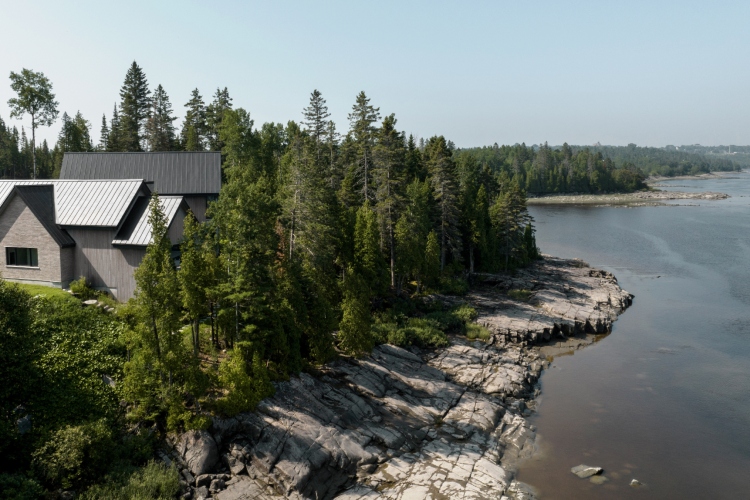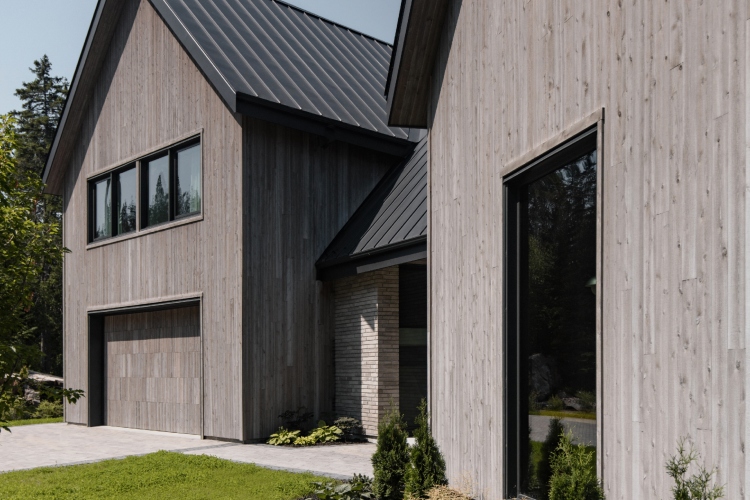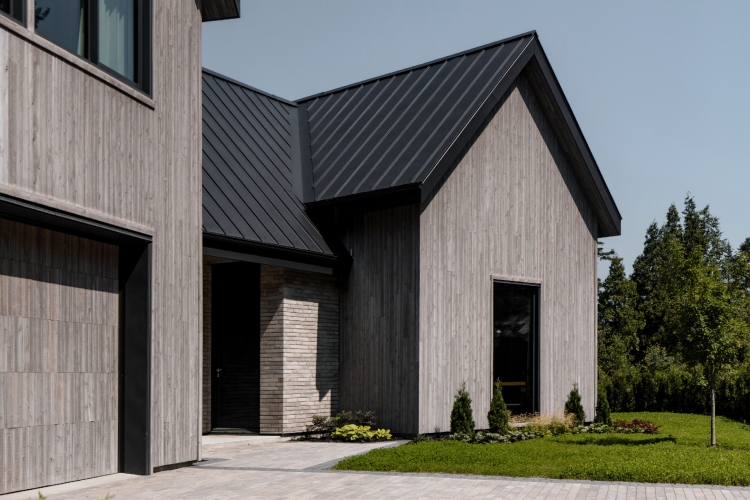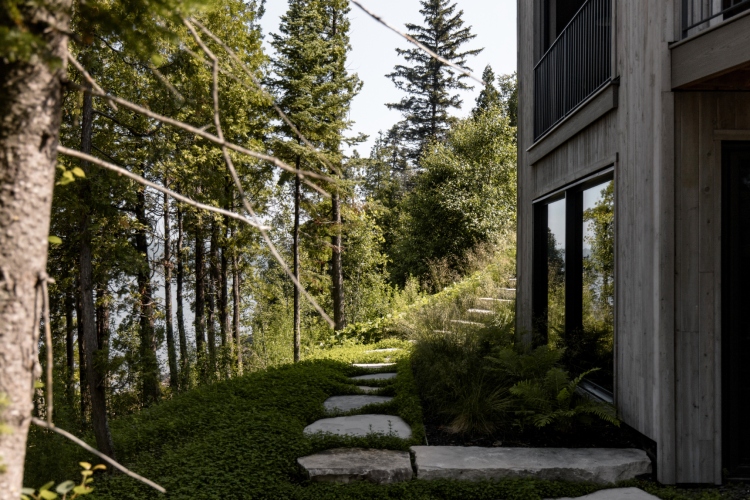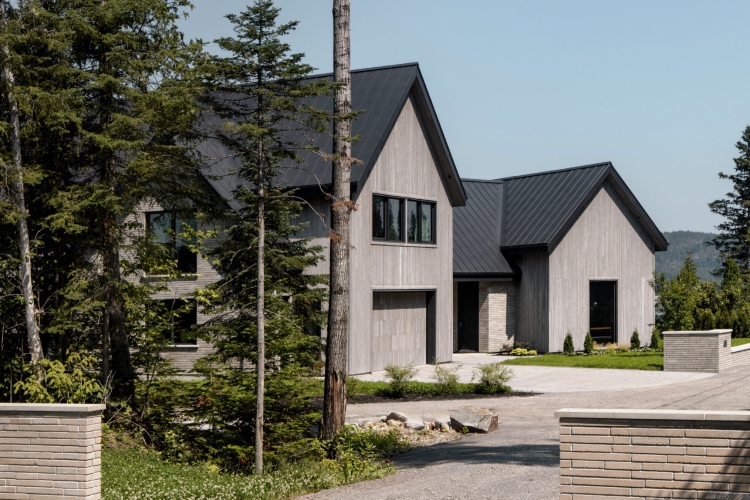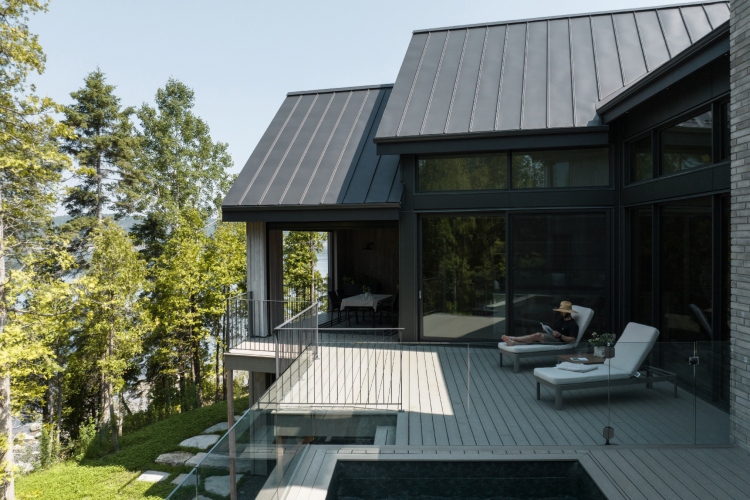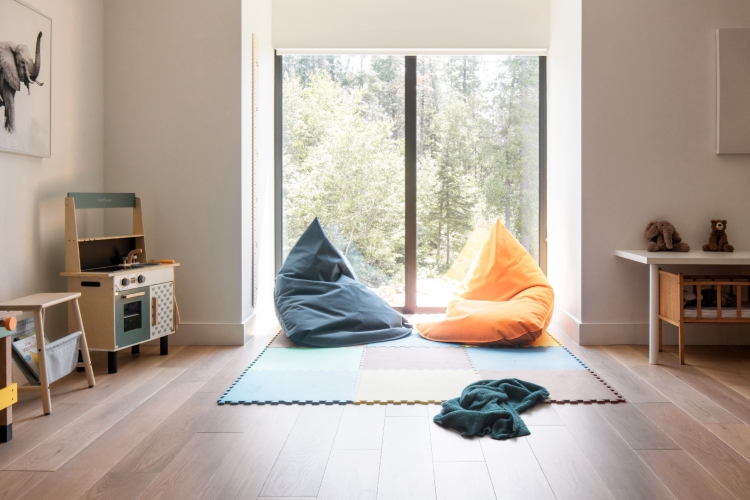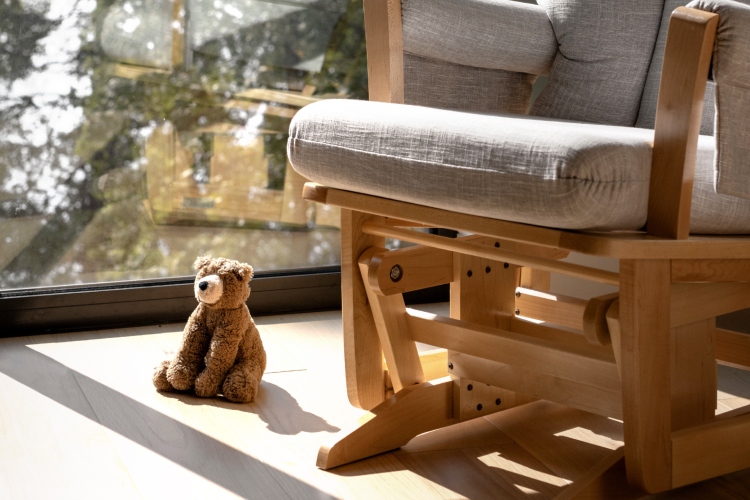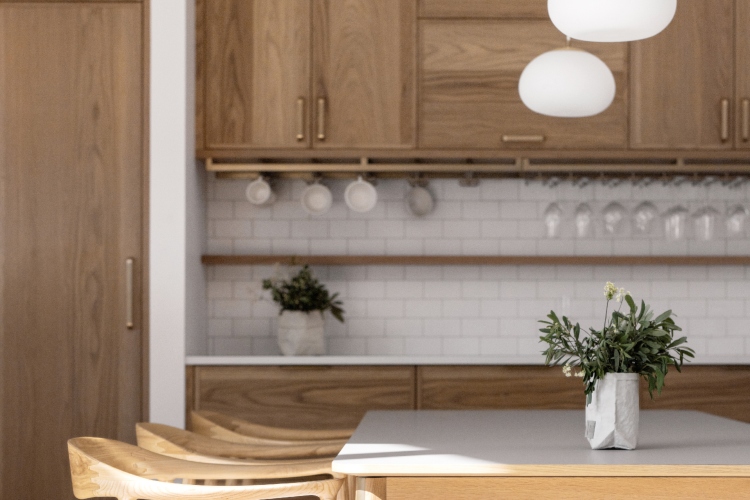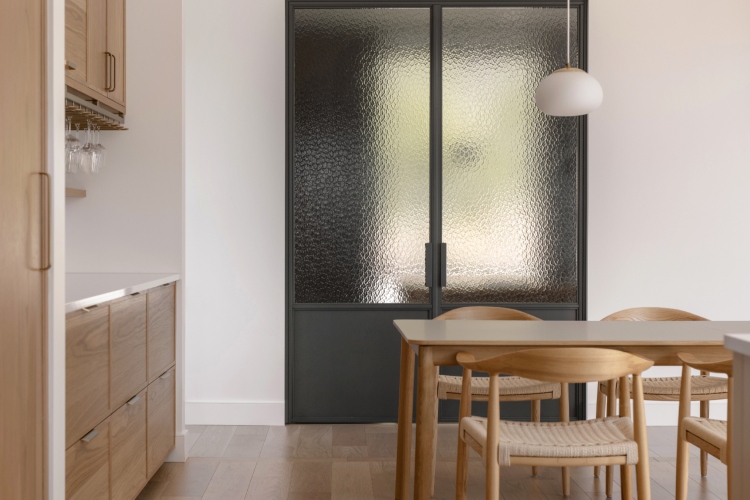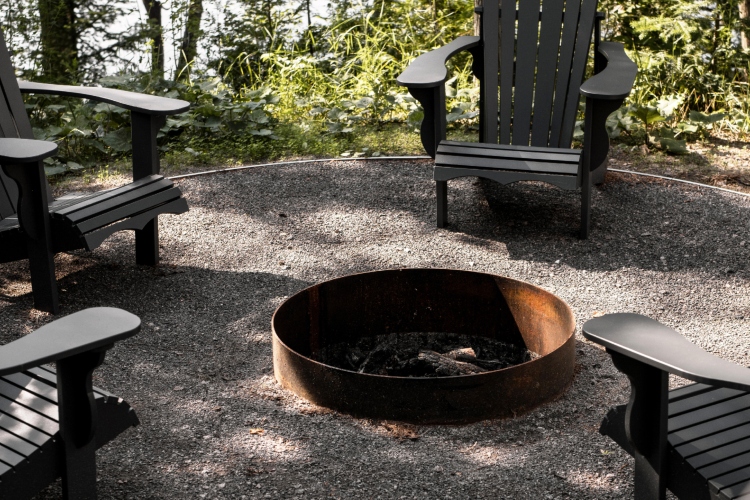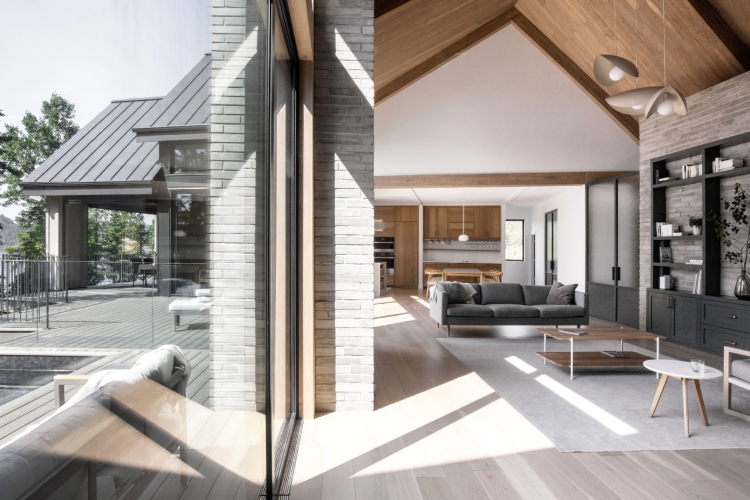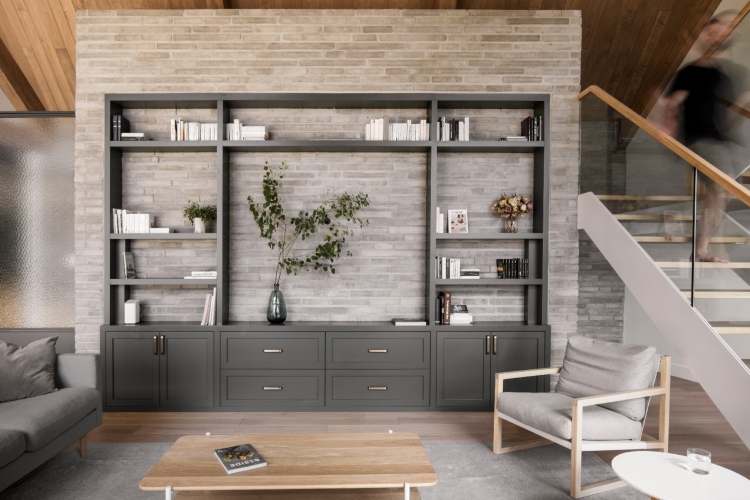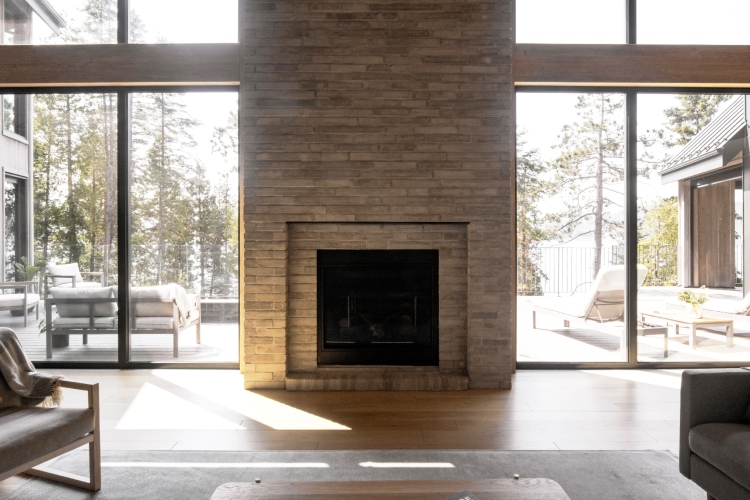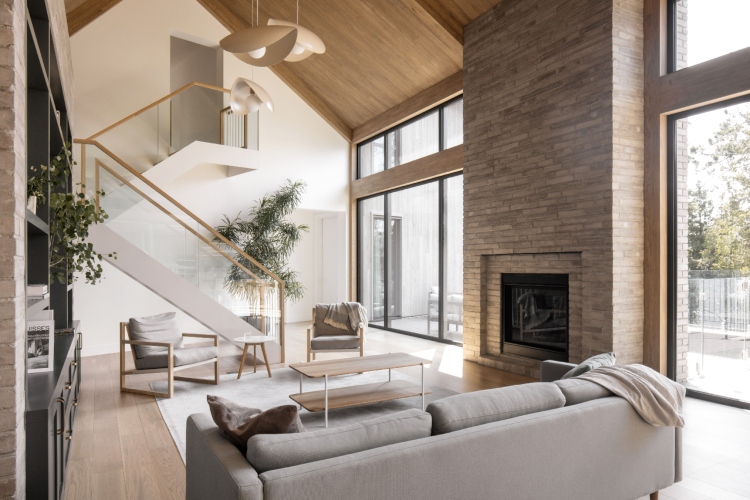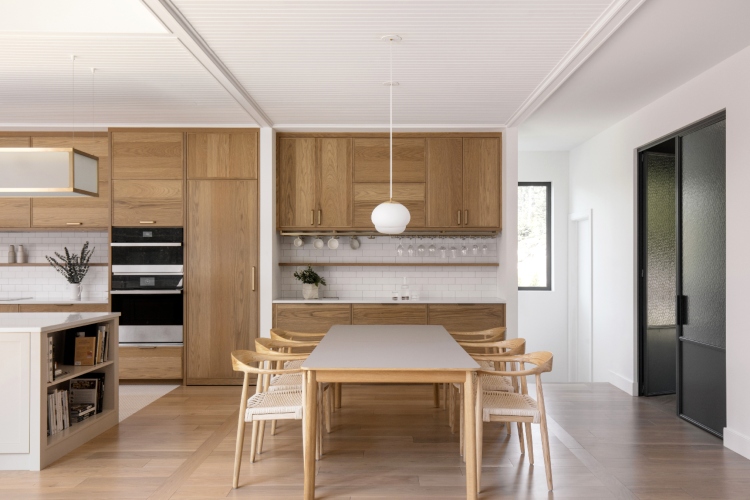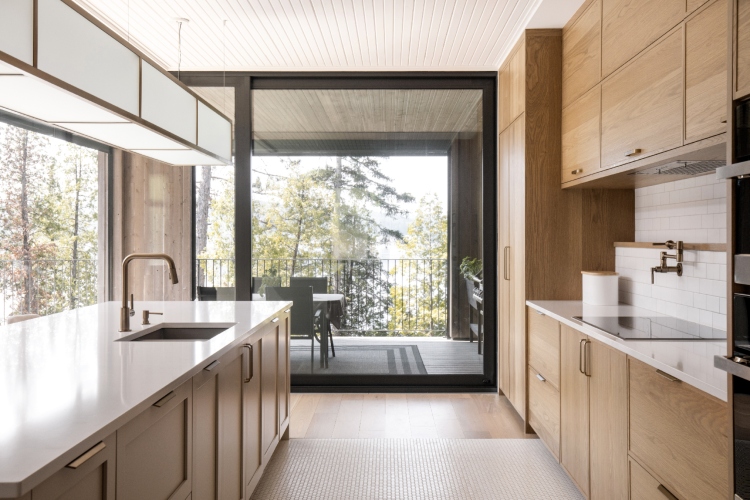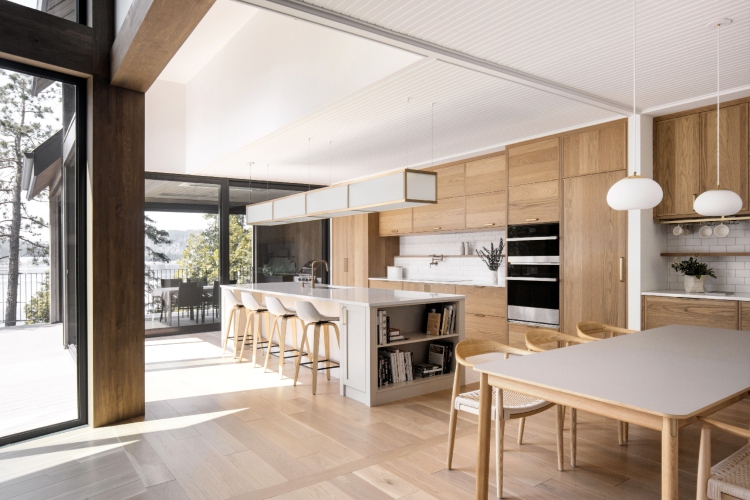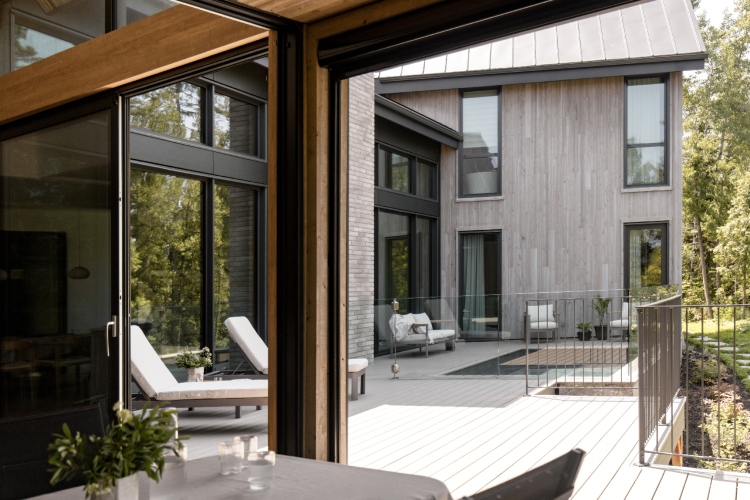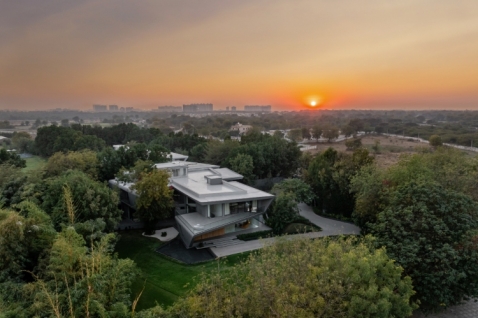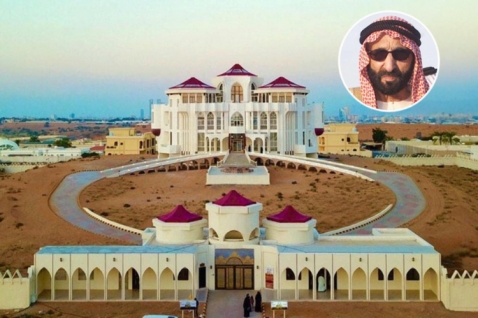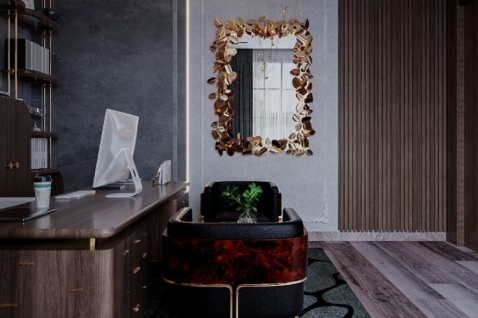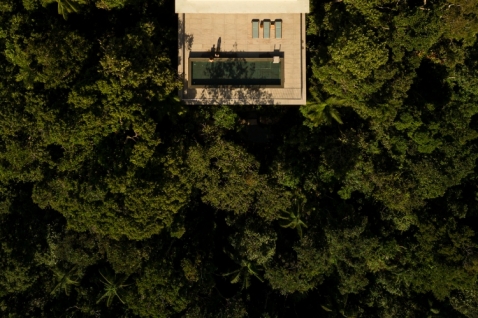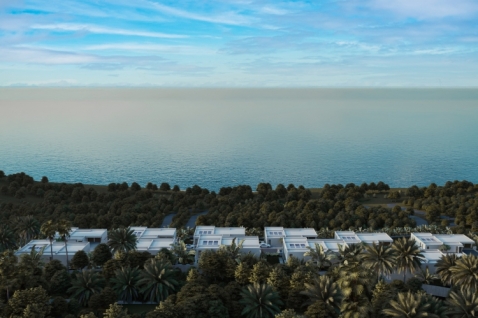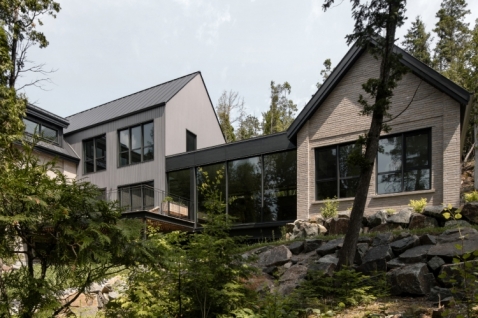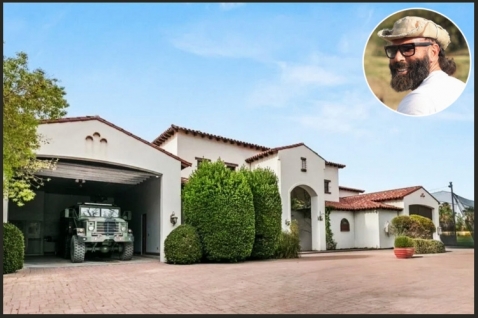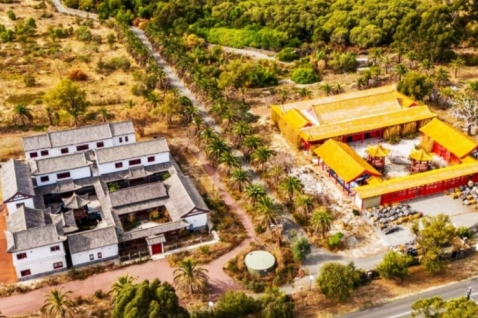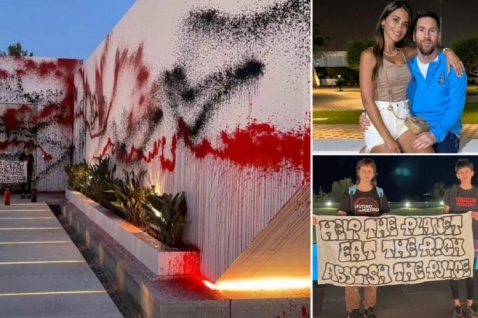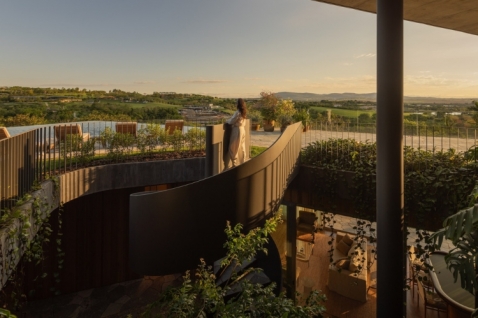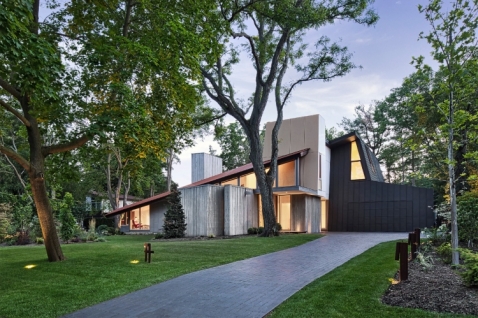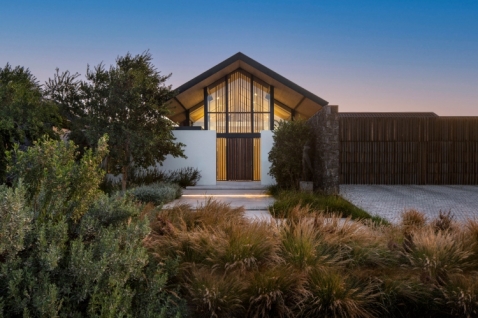More photos
Matière Première Architecture has unveiled Berges Grises, a unique architectural structure located in the picturesque region of Saguenay in Quebec…
This project showcases a subtle blend of architectural tectonics, ecological awareness, and warm design, achieving a harmonious balance with the natural landscape of Fjord-du-Saguenay.
The Challenge of a Triangular Shape The triangular-shaped location, bounded by various conditions, slopes toward the shore where rocks, shaped by tides, testify to the power of nature and the flow of time. "The name 'Berges Grises' is directly inspired by these landscapes shaped by nature and reflects our vision of architecture that contemplates its environment," explains Etienne Chossé, architect at Matière Première Architecture, emphasizing how the location guided every creative decision.
The site's topography, with a lateral slope and a more pronounced slope towards the water, was a key factor in the design process. The architectural team had to consider these conditions, as well as the need to preserve privacy while incorporating the right of way to the adjacent project.
Three Volumes Open to the Landscape In response to these challenges, the concept of a U-shaped design emerged with the intention of orienting the house towards the back, creating an outdoor living space away from prying eyes. However, due to the triangular plot, the concept evolved into an extended H shape, where the two side wings align with the plot lines, opening the courtyard to the breathtaking landscape.
Berges Grises consists of three distinct volumes with different functions, covering approximately 420 square meters over two levels. The first volume includes the ground floor and upper level, encompassing bedrooms, bathrooms, and a garage. The second volume houses the ground floor and garden level, with a living room on the ground floor and a "man cave" at the garden level, utilizing the site's double slope. These volumes are connected by a third transverse brick element that aligns with the resulting angles of the design. The entire structure suggests an exterior cedar cladding that will naturally patinate over time and elongated brickwork, giving it a noble and timeless character.
Urban Concept in the Heart of the Forest The clients, a young couple, had a clear vision of integrating an eclectic mix of elements into the project, with an emphasis on longevity. Their preference for open-plan kitchens in the style of restaurants led to the choice of red oak finishes, white mosaic, and metro tiles for the living area, as well as the addition of a long, matte glass and brass light fixture above the kitchen island, reflecting urban restaurant design in a forest setting.
At the heart of the project is an oversized living room, serving as a connecting and circulation center among the spaces and providing a contemplative place with a comprehensive view of the house and exterior. A massive fireplace anchors the space, with a built-in library on the opposite brick wall. An architectural staircase of floating wooden planks leads to the upper level, its design in harmony with the house's angles. The layout allows for spacious windows, letting in abundant light while overlooking the intimate courtyard, which extends from the open veranda and living room, and includes a relaxation area and a pool, visible from every room.
Materiality and Territory Materiality is central to Berges Grises, with the design process integrating the clients' desires and local building traditions. The exterior cedar finish not only adds an elegant look to the structure but also ensures longevity, both physically and conceptually. The choice of elongated brick for the unifying volume creates an anchor for the building, while blending with the surrounding natural elements. The charcoal-colored steel roof and extensive glazing add a contemporary touch to the overall design.
In terms of construction, ecological sensitivity was key. The exterior landscape design is minimalist and balanced, with the integration of indigenous plants throughout and a clover ground cover introduced in areas disturbed during construction.
Sensitive Integration One of the key approaches that guided the respectful and efficient realization of Berges Grises was the adoption of prefabricated frame construction. This strategy allowed the firm to significantly reduce the duration of the works, thus limiting its impact on the indigenous plant context and the delicate coastal ecosystem. At the same time, sediment barriers were placed near the construction site for the duration of the works.
“This effort played a key role in protecting and maintaining the balance of the coastline, ensuring that our architectural intervention was sensitively integrated into its natural environment,” explains Samuel Godin, a founding team member of the firm.
In the broader context, the project design aligns with a parallel project on the adjacent site, called Sur Le Ruisseau. Both projects share a beige, earthy, linear brick exterior, creating a sense of continuity while preserving their distinctive formal languages. This delicate balance encapsulates the essence of Berges Grises—an architectural creation that respects its environment while asserting its presence on the horizon of the Fjord.

